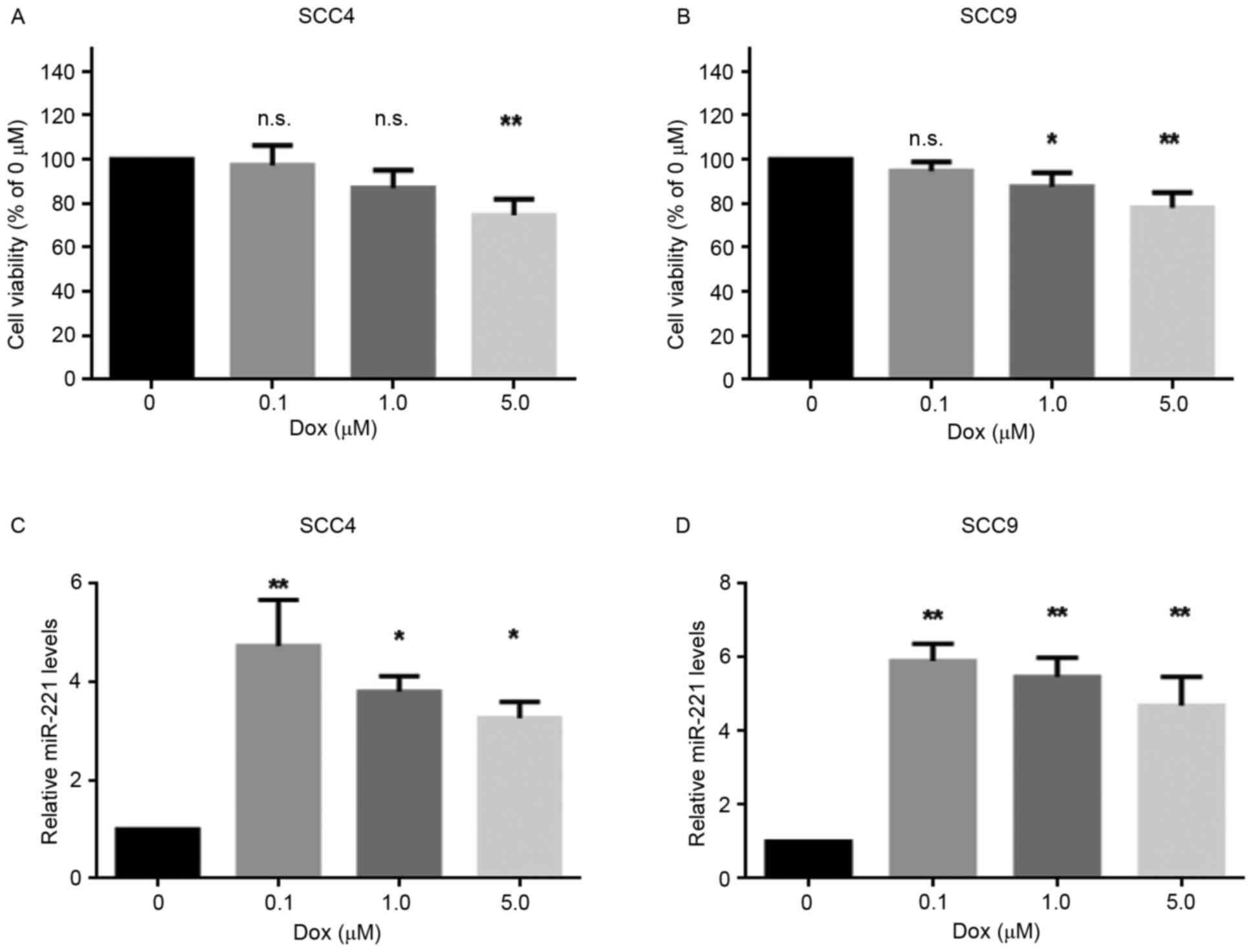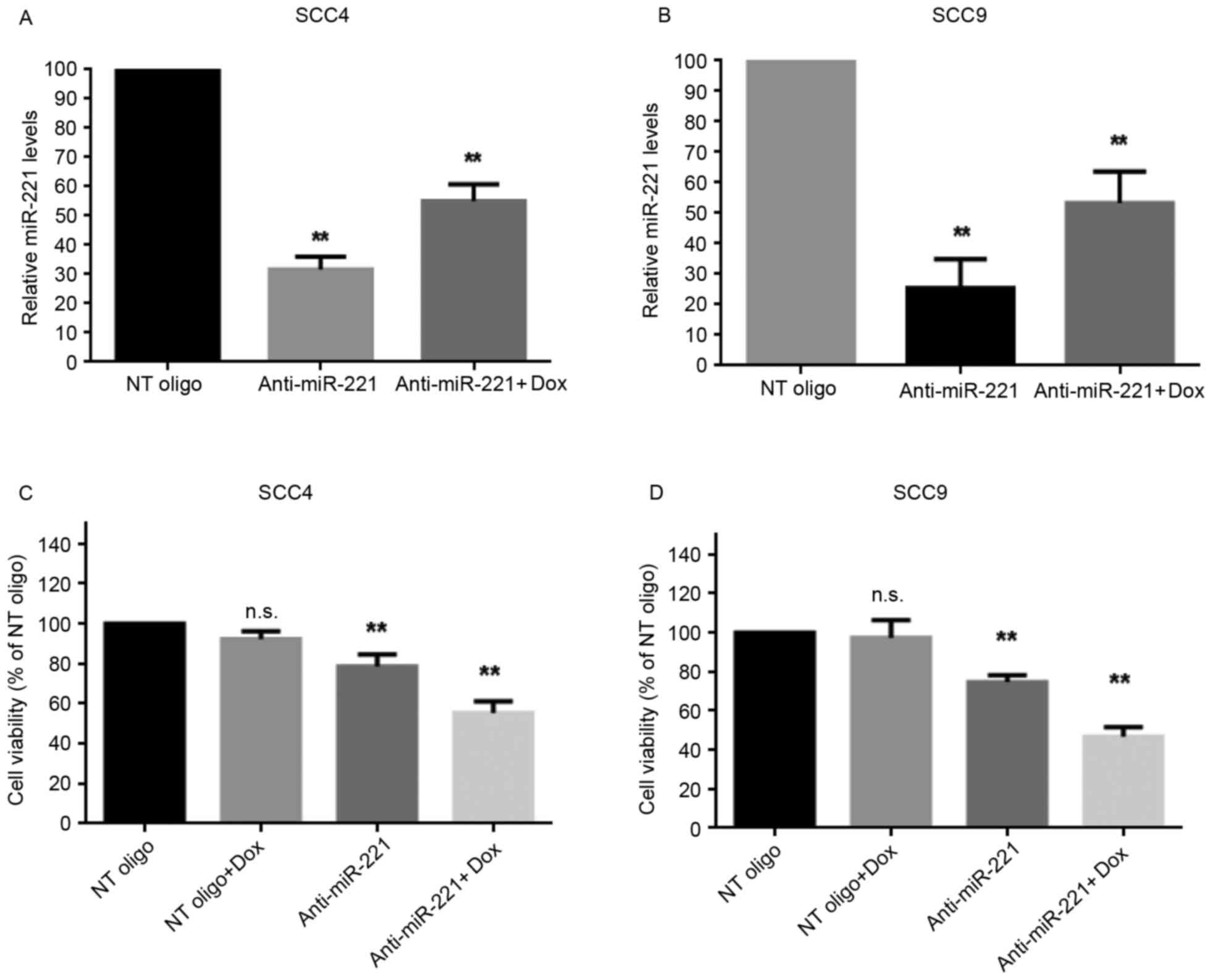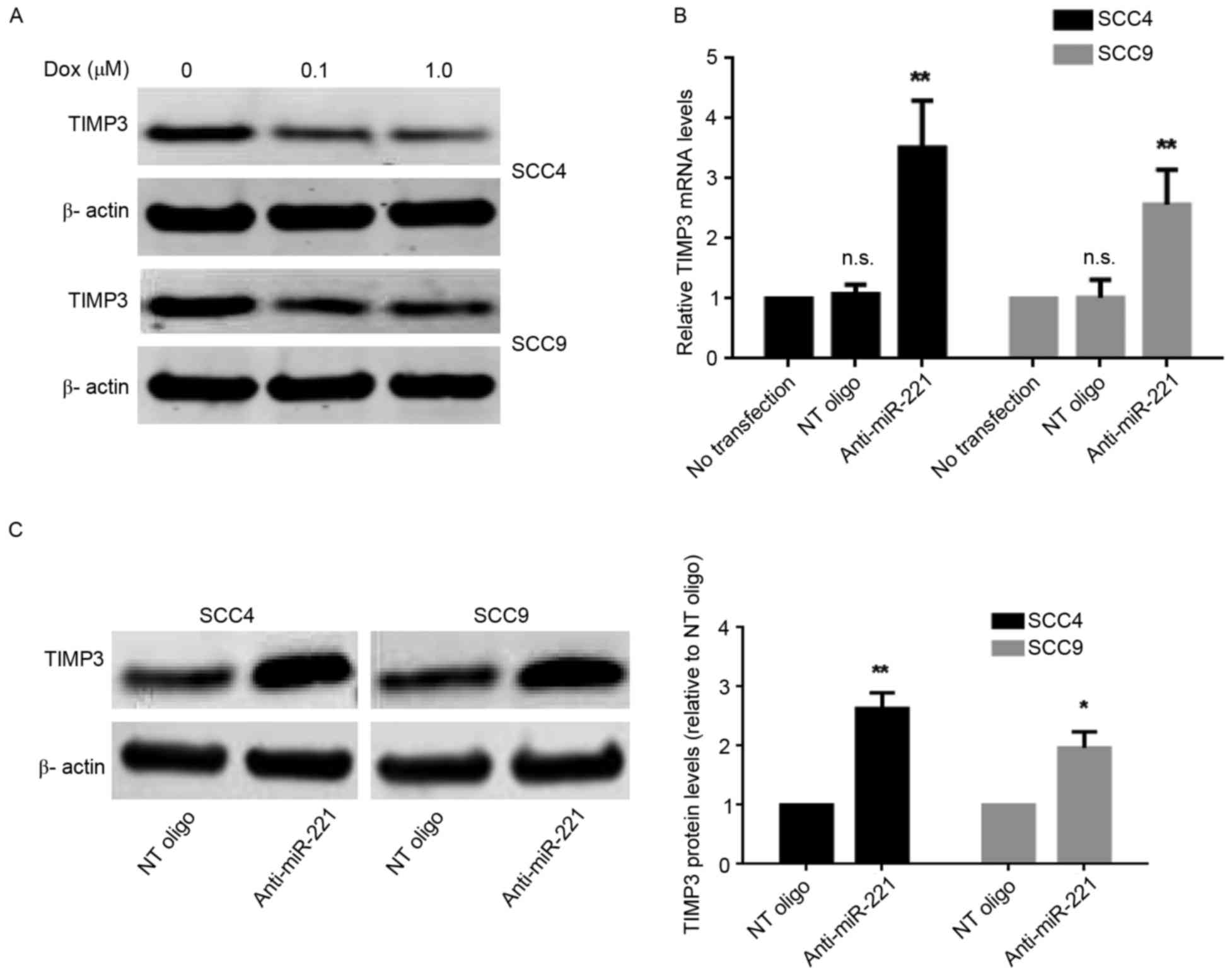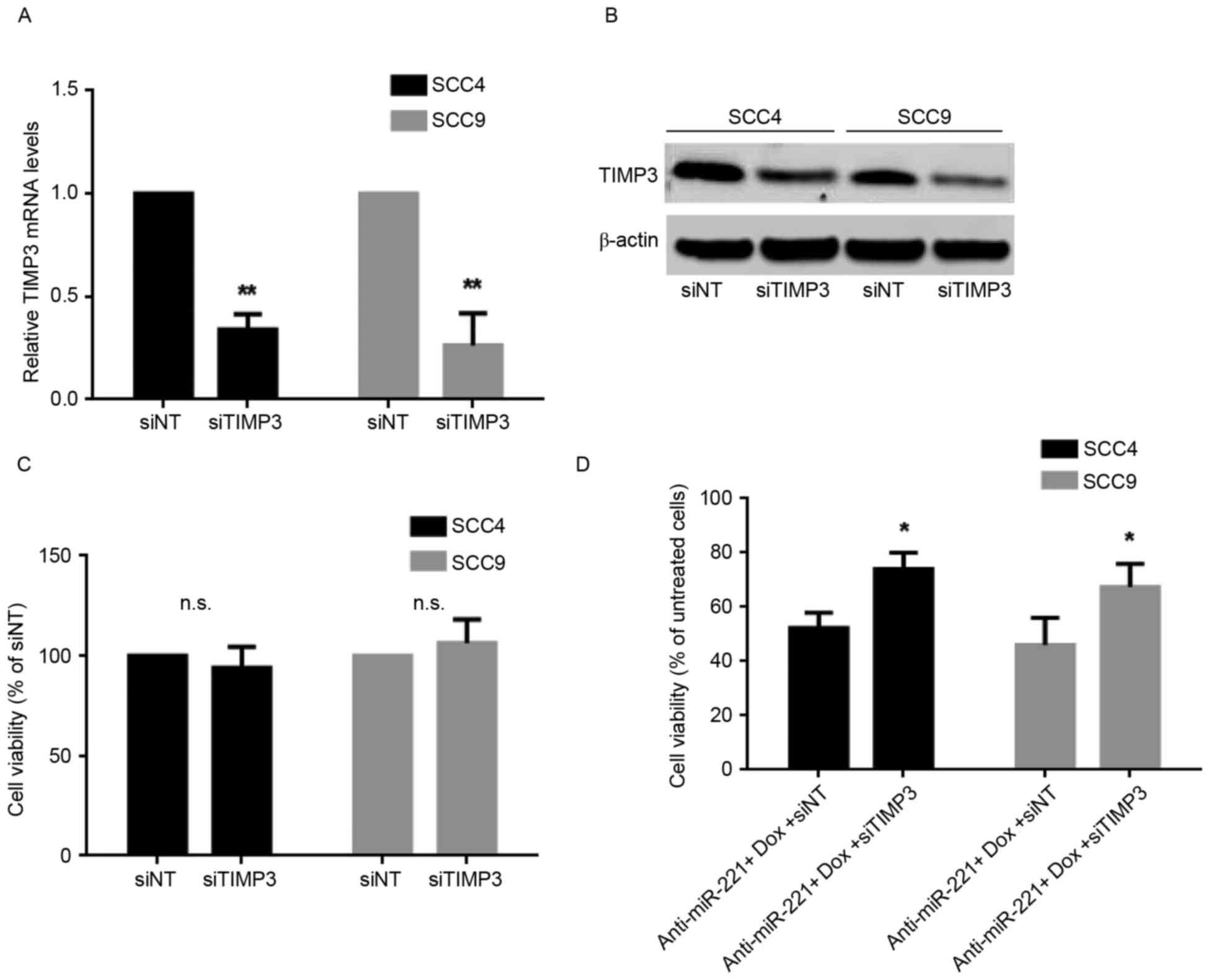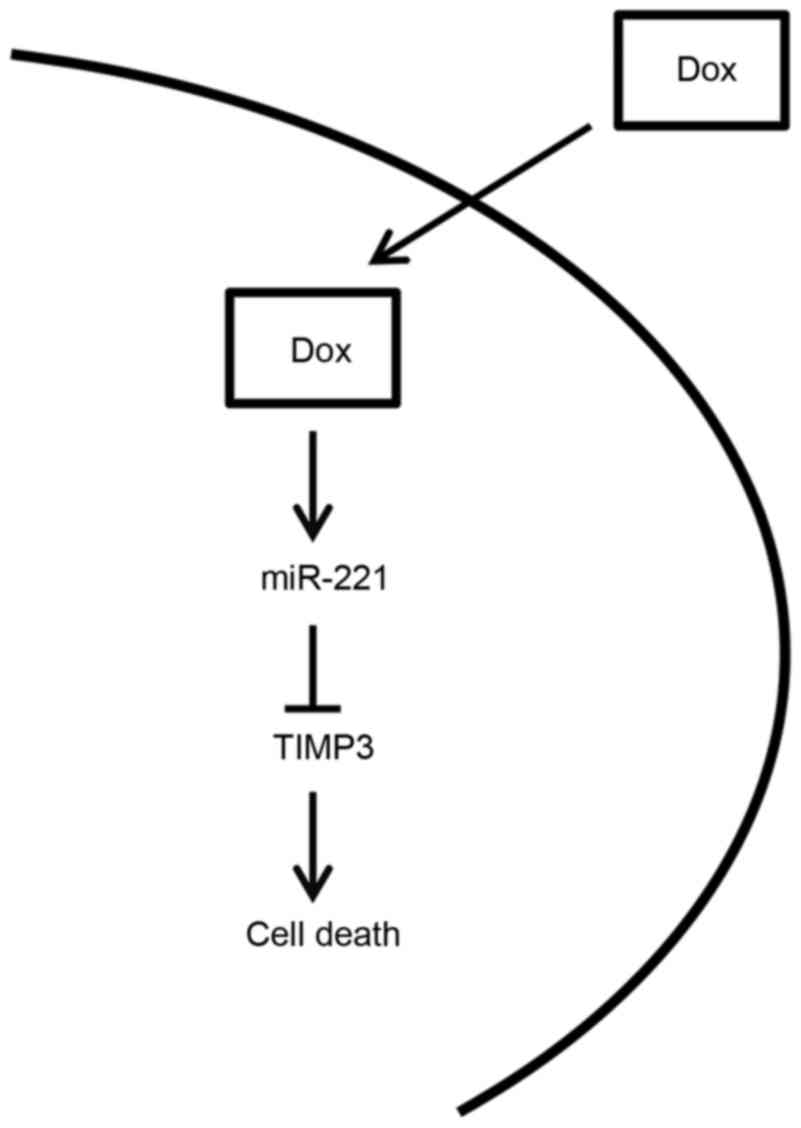Oral squamous cell carcinoma cells are resistant to doxorubicin through upregulation of miR‑221
- Authors:
- Published online on: July 4, 2017 https://doi.org/10.3892/mmr.2017.6915
- Pages: 2659-2667
-
Copyright: © Du et al. This is an open access article distributed under the terms of Creative Commons Attribution License.
Metrics: Total
Views: 0 (Spandidos Publications: | PMC Statistics: )
Total PDF Downloads: 0 (Spandidos Publications: | PMC Statistics: )
Abstract
Oral squamous cell carcinoma (OSCC) cells are usually resistant to doxorubicin, resulting in limited application of doxorubicin in OSCC treatment. MicroRNA (miR)‑221 has been reported to be involved in the development of OSCC; however, it remains unclear if and how miR‑221 is implicated in modulating the sensitivity of OSCC cells to doxorubicin. In the present study, reverse transcription‑quantitative polymerase chain reaction (RT‑qPCR) was used to assess miR‑221 expression in OSCC cells in response to doxorubicin treatment. In addition, the SCC4 and SCC9 OSCC cell lines were transfected with anti‑miR‑221 oligonucleotides and cell viability and apoptosis following doxorubicin treatment were evaluated using an MTT assay and Annexin V‑fluorescein isothiocyanate/Hoechst double staining, respectively. The mRNA and protein expression levels of tissue inhibitor of metalloproteinase‑3 (TIMP3) in anti‑miR‑221‑transfected cells were assessed using RT‑qPCR and western blot analysis, respectively. Furthermore, a luciferase reporter assay was performed to investigate whether TIMP3 may be a direct target gene of miR‑221. To explore the roles of TIMP3 in miR‑221‑mediated cell responses, TIMP3 expression was silenced following transfection with TIMP3‑targeting small interfering (si)RNA in cells overexpressing miR‑221, and cell viability and apoptosis in response to doxorubicin treatment were measured. The results of the present study demonstrated that miR‑221 expression was upregulated in SCC4 and SCC9 cells following treatment with doxorubicin. However, inhibiting the doxorubicin‑induced upregulation of miR‑221 through transfection with anti‑miR‑221 oligonucleotides led to an increase in the sensitivity of OSCC cells to doxorubicin. In addition, the results indicated that TIMP3 was a direct target of miR‑221 in OSCC cells, as determined by a 3'‑untranslated region luciferase reporter assay. Co‑transfection of cells with anti‑miR‑221 oligonucleotides and TIMP3‑specific small interfering RNA resulted in reduced sensitivity to doxorubicin compared with the cells transfected with the miR‑221 inhibitor alone. In conclusion, these results indicated that OSCC cells are resistant to doxorubicin through upregulation of miR‑221, which in turn downregulates TIMP3. Therefore, silencing miR‑221 or upregulating TIMP3 may be considered promising therapeutic approaches to enhance the sensitivity of OSCC to doxorubicin.



